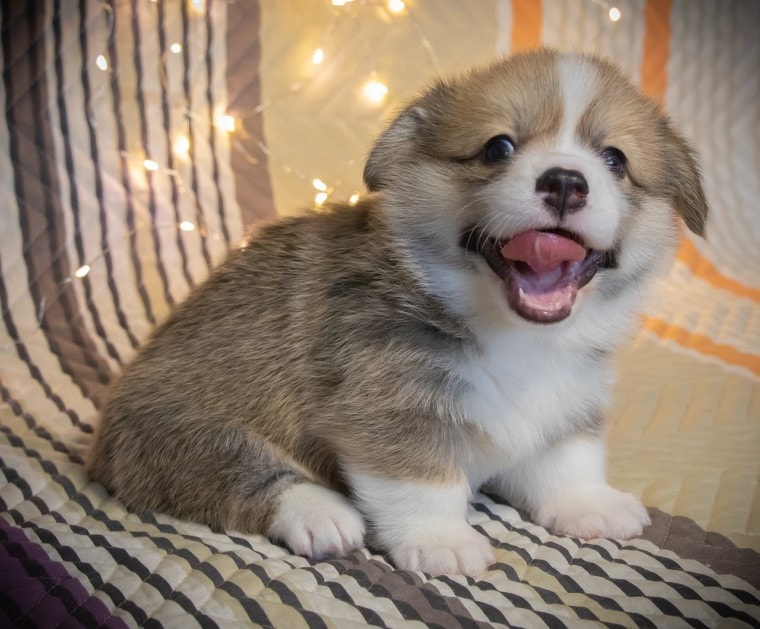
Owning a puppy for the first time can be a rewarding experience, especially if it’s your first one. They’re entertaining, sleep often, and love to play. However, not everything with puppyhood is fun and games, especially when it comes to health and proper growth. As puppies start to mature, they will lose their baby teeth, and adult teeth will emerge. The primary teeth start falling out at around 13–16 weeks. It can be painful and cause your puppy to chew on anything in sight, leaving you with holes in your shoes and furniture. If you’re wondering when puppies lose their baby teeth and stop teething, here’s a helpful guide on tooth loss and how to relieve teething pain:
Do Dogs Lose Their Teeth as Puppies?
Yes! Just like human babies, puppies also lose their baby teeth (aka deciduous or milk teeth) to make room for their permanent teeth (aka primary or adult teeth). Both stray and pet dogs lose their teeth, as well as many other animals. Although it may seem a bit gruesome, tooth loss is an important part of a healthy puppy’s growth. If you’re new to owning dogs or puppies, you’ll want to prepare yourself for finding a few teeth in its crate or bedding.
Puppies need to lose their teeth, but it’s even more important that the permanent ones grow in. If your puppy’s teeth are gone, but the new ones aren’t coming in, it could be stuck in the gumline. While some breeds can take longer for permanent teeth to grow, you should contact your veterinarian to make sure your puppy is on the right track if you think a tooth is stuck or delayed.
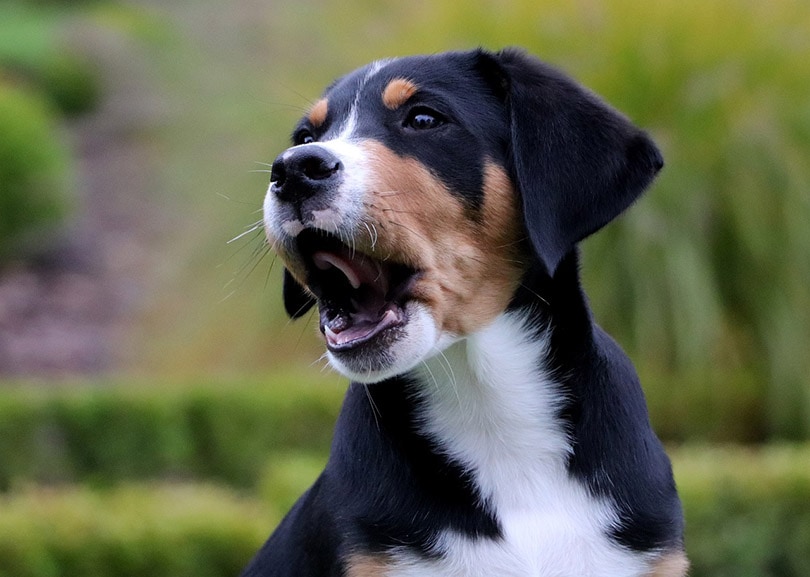
When Do Puppies Start and Stop Losing Their Teeth?
Puppies grow two sets of teeth: primary (28 teeth) and secondary (42 teeth). The primary teeth are the first set of teeth that grow, which starts at around 3–5 weeks. Most puppies are sold at around 8–10 weeks, so you should see nearly all 28 primary teeth by this age. The primary teeth are the ones that fall out, which the secondary teeth will eventually replace. The primary teeth start falling out at around 13–16 weeks, depending on the puppy’s breed and size.
When it comes to when they stop losing their teeth, it’s not as clear of an answer. Your vet can tell you if your puppy’s primary teeth are gone or if there are still some remaining. Some dogs generally will lose some teeth as new ones grow in, while others may have “double-teeth” or “persistent deciduous teeth.” Double teeth happen when a puppy’s baby tooth is still intact as the new one comes in. While it can resolve itself, it’s best to contact your veterinarian for your options. Double-teeth can lead to overcrowding, crooked teeth, and even cystic infection.
Which Teeth Do Puppies Lose?
While there are only 28 primary teeth in comparison to the 42 permanent teeth your puppy will eventually have, it can be confusing to know which teeth your puppy will lose. Your puppy will lose all 28 primary teeth, though new ones will start to emerge as the old ones start to fall out. Check your dog’s mouth daily to see which teeth are gone and which ones are growing in, as no primary teeth must remain.
Some secondary teeth don’t have a primary counterpart, meaning your puppy will not only replace missing teeth but also have new teeth that didn’t exist before. The molars are almost always the last to grow in, which are the large, mountainous-like teeth in the back of the mouth on the upper and lower jaws. They won’t start to emerge until around 20–23 weeks or around 7 months of age.
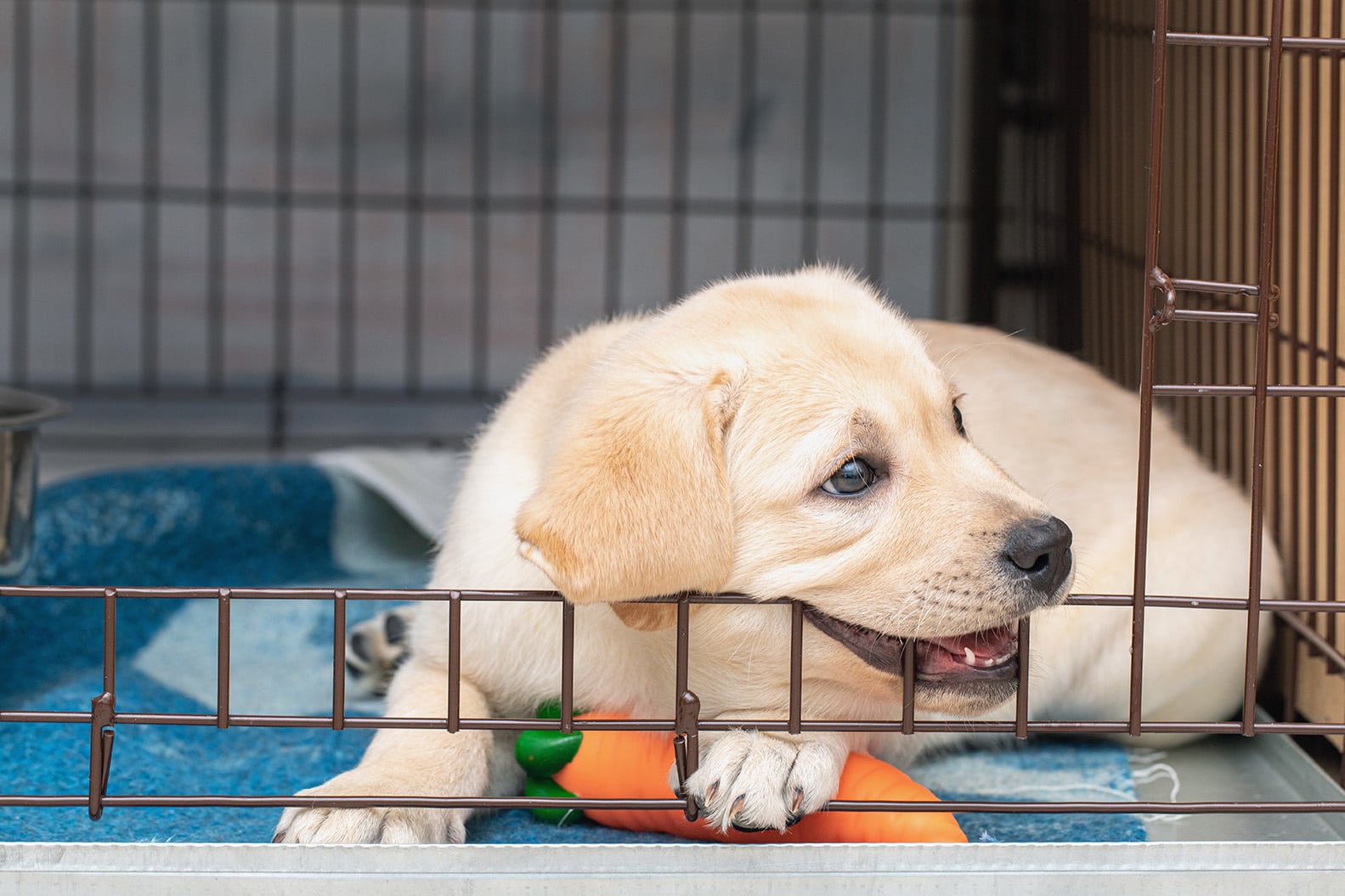
My Puppy Lost a Tooth but I Can’t Find it. Is that Normal?
One of the most shocking things to experience is a mouth of missing teeth and no teeth to be found, especially if this is your first dog. What may be even more shocking to witness is your dog losing a tooth and eating it, especially during dinnertime. While it can cause some panic, it’s perfectly natural for your dog to do and will happen to most baby teeth. You may find bigger teeth like canines, which are not as easy to swallow. Simply remove it from your dog’s food or wherever you found it and throw it away.
What is Teething, and How Long does it Last?
Teething is the process of your dog’s teeth coming in, which is generally a painful and potentially long period of time. Both sets of teeth start out as small pieces, which start to grow and emerge from the gumline. The growth rate of primary teeth is much shorter, but the teething will continue until after all secondary teeth are in. Secondary teeth take much longer to grow in, so it’s important to prepare for nearly 8 months of teething.
Since puppies have two sets of teeth throughout puppyhood, they will start teething as early as 3 weeks of age. Puppies may not show signs of teething until the secondary teeth start to emerge, but it’ll be quite apparent when it reaches its peak pain and discomfort level. Dogs that teethe seem to never stop gnawing, so you’ll know when it’s time to try and relieve the pain.
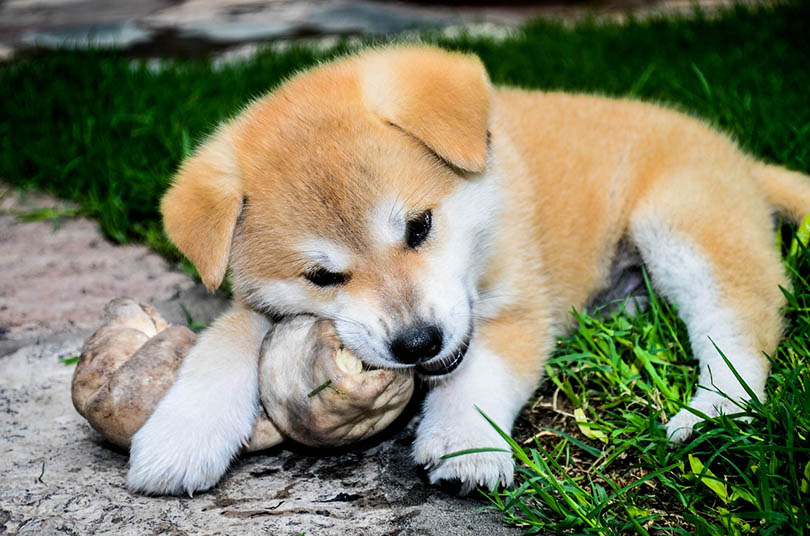
Signs of Teething in Puppies:
The earlier stages of teething may not be as bothersome for primary teeth, but it’s usually quite painful for secondary teeth. If you’ve never had a puppy before, you may not know that your puppy is teething. Most puppies make it quite apparent when they’re teething. They’ll look for anything to chew on, including wood, rocks, shoes, furniture, or anything that could provide relief. But some puppies may not be as obvious, so here are some telltale signs of teething:
The 3 Ways to Relieve Pain During Teething
Teething is a painful and uncomfortable part of puppyhood, but there are a few ways to help relieve the pain. If your puppy seems to be suffering from teething, use one of these methods to help soothe its mouth and gums:
1. Frozen Veggies
One of the easiest and safest ways to help your teething puppy is to offer a piece of frozen fruit. Your puppy can gnaw away at it as the frozen temperature cools and numbs the gums. Make sure to give your puppy the appropriate size to prevent choking, especially with smaller breeds.

2. Frozen Washcloth
If you’re not too keen on frozen vegetables, another popular method is to freeze a wet washcloth. They’re generally durable when they’re frozen and can provide enough relief, regardless of size. Always monitor your puppy with non-edible items like washcloths and take them away as soon as it’s no longer frozen.
3. Teething Dog Toys
While teething toys are usually synonymous with babies, there are teething toys for puppies as well. Many of these toys are durable and safe for your dog to gnaw on, which can massage the gums and keep your puppy happy. As with any toy, always supervise your puppy as it chews to make sure no pieces break off and cause a choking hazard.
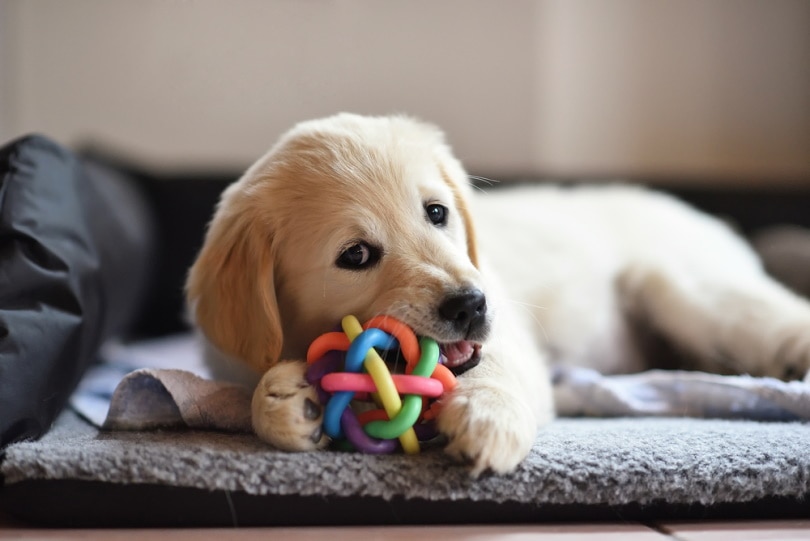
Conclusion
Teething and tooth loss may be natural for dogs, but it can be a shocking experience for first-time dog owners. They will chew at anything and everything, so it’s important to have chew toys and teething toys for your puppy to gnaw on. It’s important to remember that teething is uncomfortable and painful, so try not to be upset if your puppy is relentless with chewing. Check for any swelling or excessive bleeding to make sure there are no double teeth or infections. When in doubt, call your vet to make sure your puppy’s teeth are on the right track.
What to read next:
Featured Image Credit: ElfinFox, Pixabay








